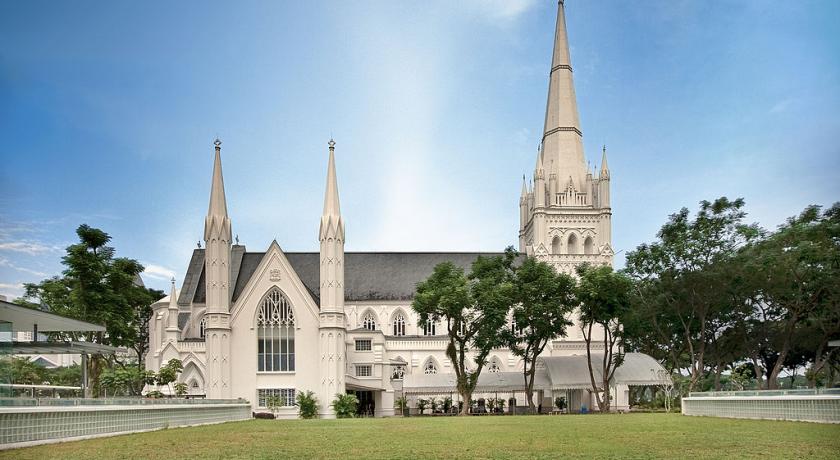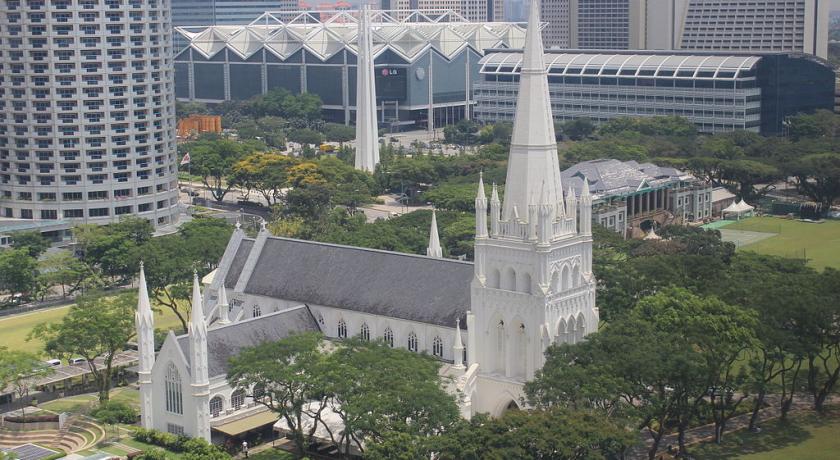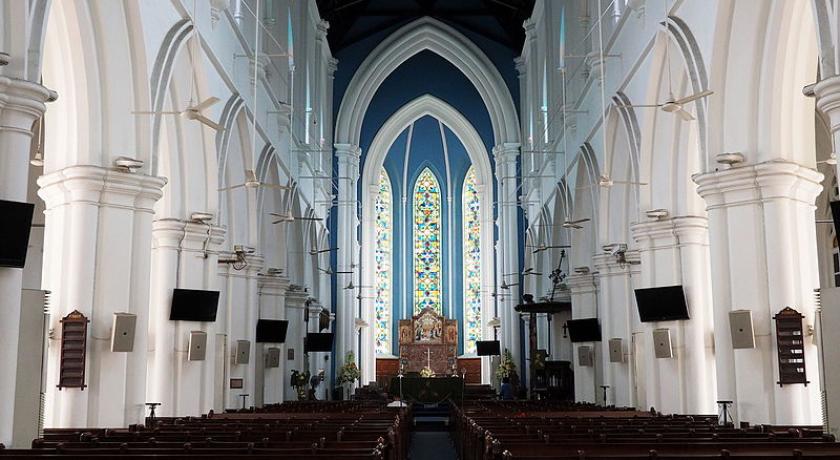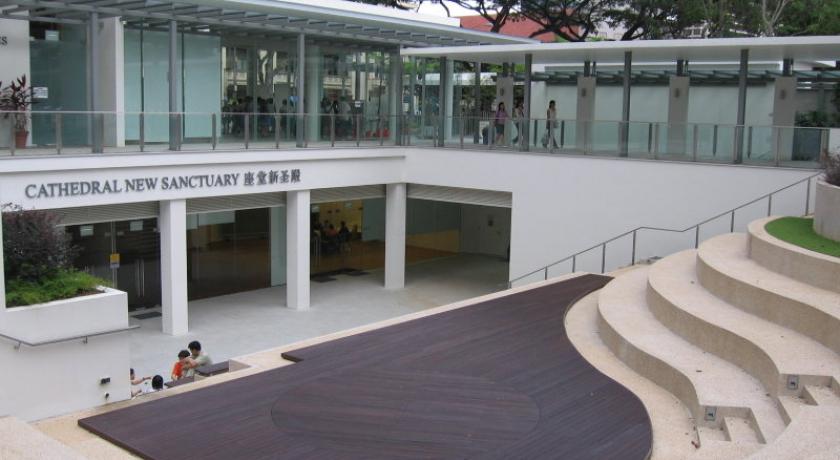Description
Saint Andrew's Cathedral (Chinese: 圣安德烈座堂; pinyin: Shèng Āndéliè Zuòtáng) is an Anglican cathedral in Singapore, the country's largest cathedral. It is located near City Hall, MRT Interchange in the Downtown Core, within the Central Area in Singapore's central business district. It is the Cathedral church of the Anglican Diocese of Singapore and the mother church of her 26 parishes and more than 55 congregations here. The logo of the Cathedral is the St Andrew's cross. The Year 2006 marks the 150th Anniversary of the St Andrew's Church Mission since 1856.
History
Designed by George Dumgoole Coleman, the original Saint Andrew's Church was built from 1835 to 1836. The second Church of Saint Andrew was designed by John Turnbull Thomson and built in circa 1842. Rumours of unhappy spirits and damage caused by two lightning strikes in 1845 and 1849 resulted in its closure in 1852 and subsequent demolition in 1855.
Colonel Ronald MacPherson, the Executive Engineer and Superintendent of convicts, designed the new church. To cut costs, Indian convict labour was used, as it was for many buildings of the day. The Rt Rev. Dr Daniel Wilson, Lord Bishop of Calcutta, laid the foundation stone on 4 March 1856, and the first service was held on 1 October 1861. Dr George Cotton, who succeeded Bishop Wilson, had the honour of consecrating the cathedral on 25 January 1862. In 1869, it was transferred from the jurisdiction of Calcutta to the Diocese of Labuan and Sarawak and, in 1870; Archdeacon John Alleyne Beckles consecrated it as the Cathedral Church of the United Diocese.
Saint Andrew's Cathedral is owned by the Synod of the Diocese of Singapore, and is a centre for Singapore's Anglican Mission. In 1856, Saint Andrew's Mission launched the first Anglican evangelical outreach in Singapore. The first Anglican bishop, The Right Reverend J. Ferguson-Davie, was appointed in 1909.
In 1942, shortly before the fall of Singapore to the Japanese, the cathedral served as an emergency hospital.
An archaeological excavation was held on its grounds in 2004 by the National University of Singapore.
Saint Andrew's Cathedral was gazetted as a national monument on 6 July 1973.
Architecture
The first cathedral was designed in the Palladian style by George Drumgoole Coleman, an architect who made contributions to many of the important buildings of early colonial Singapore.
The second cathedral designed by J.T. Thomson had a tower and spire but they were not architecturally very satisfactory, and it was demolished subsequently after two lightning strikes.
The third, and existing, cathedral was built by Indian convicts. Ronald MacPherson's design for the church, which was consecrated as a cathedral in 1870, has many good qualities and makes a prominent contribution to the Padang and Singapore's skyline. It was constructed in a Neo-Gothic architectural style, and was finished with Madras chunam. The architect is said to have drawn inspiration for aspects of the design from Netley Abbey, a ruined thirteenth century church in Hampshire, England. The piers of the nave of Saint Andrew's closely resemble the surviving piers at Netley.
Three stained glass windows are dedicated to the following: Sir Stamford Raffles; John Crawfurd, the first major Resident of Singapore; and Major General William Butterworth, Governor of the Straits Settlements. These windows fill the apse. MacPherson is remembered in the grey and red granite memorial monument surmounted by a Maltese cross in the grounds and by the stained glass window over the big west door. Jalan Klapa was renamed MacPherson Road in remembrance of his work.
Saint Andrew's Cathedral expresses its affiliation with the Anglican Communion in England through three symbolic objects. Set in a pillar by the lectern, the Canterbury Stone engraved with a bronze cross was presented by the Metropolitan Cathedral Church of Canterbury and is a sign of Saint Andrew's allegiance to the See of Canterbury. On the column that supports the pulpit is the Coventry Cross, made from two silver-plated iron nails from the ruins of the 14th century Coventry Cathedral. The Coronation Carpet in the Epiphany Chapel is a portion of the flaxen carpet that was used for the Coronation of Queen Elizabeth II in Westminster Abbey.
St Andrew's Cathedral Choir
The St Andrew's Cathedral Choir is the oldest musical institution in Singapore. The choir director is Mr. Lim Chin Kai. Susan Siaw and Lucille Quek are the choir representatives of the 46 member’s choir. There is also a children's choir. The choir director is Connie. Members of the St. Andrew’s Cathedral Choir are very much members of the St. Andrew’s Cathedral community.
Source https://en.wikipedia.org/wiki/St_Andrew%27s_Cathedral,_Singapore
Address
Singapore
Singapore
Lat: 1.292491078 - Lng: 103.852355957







